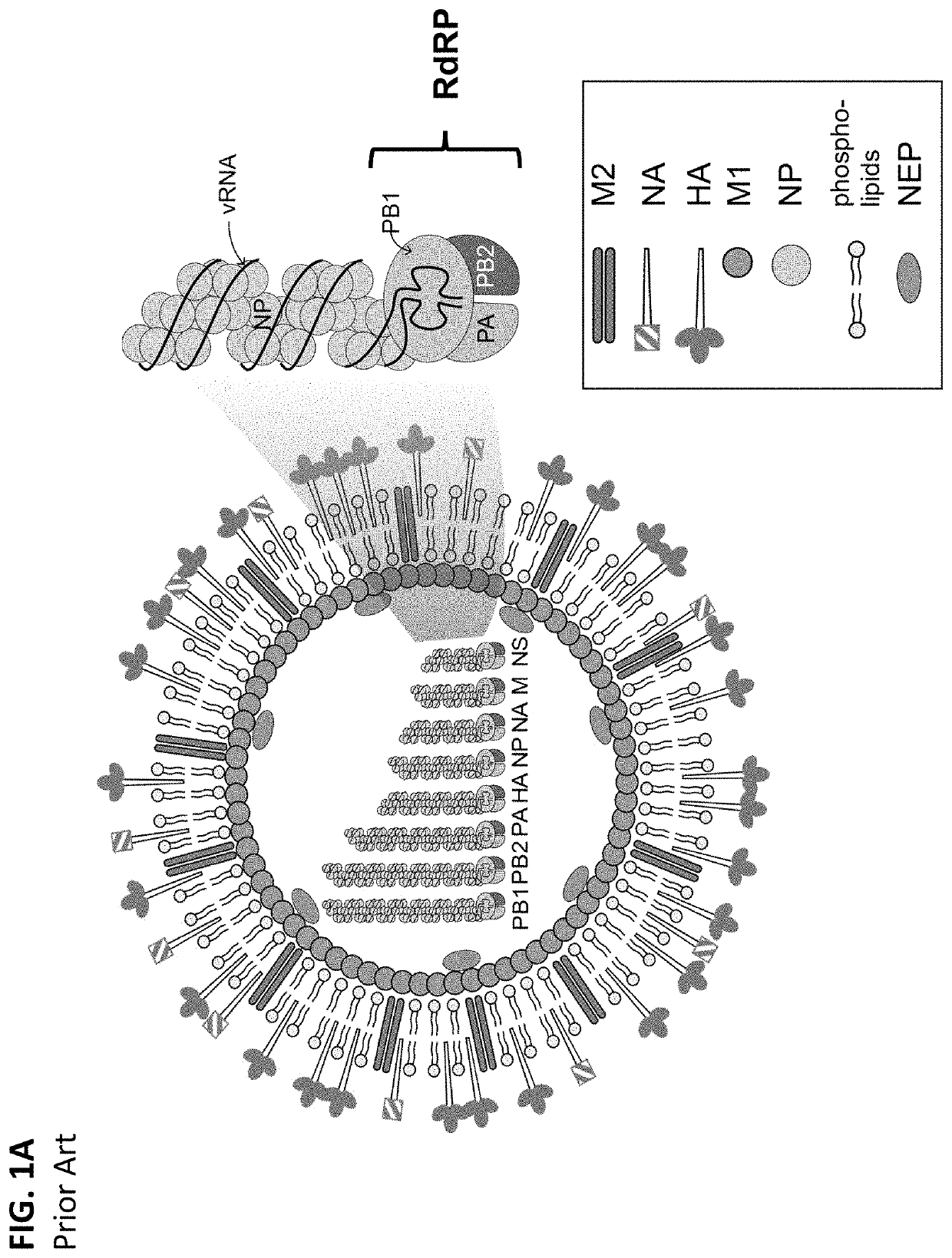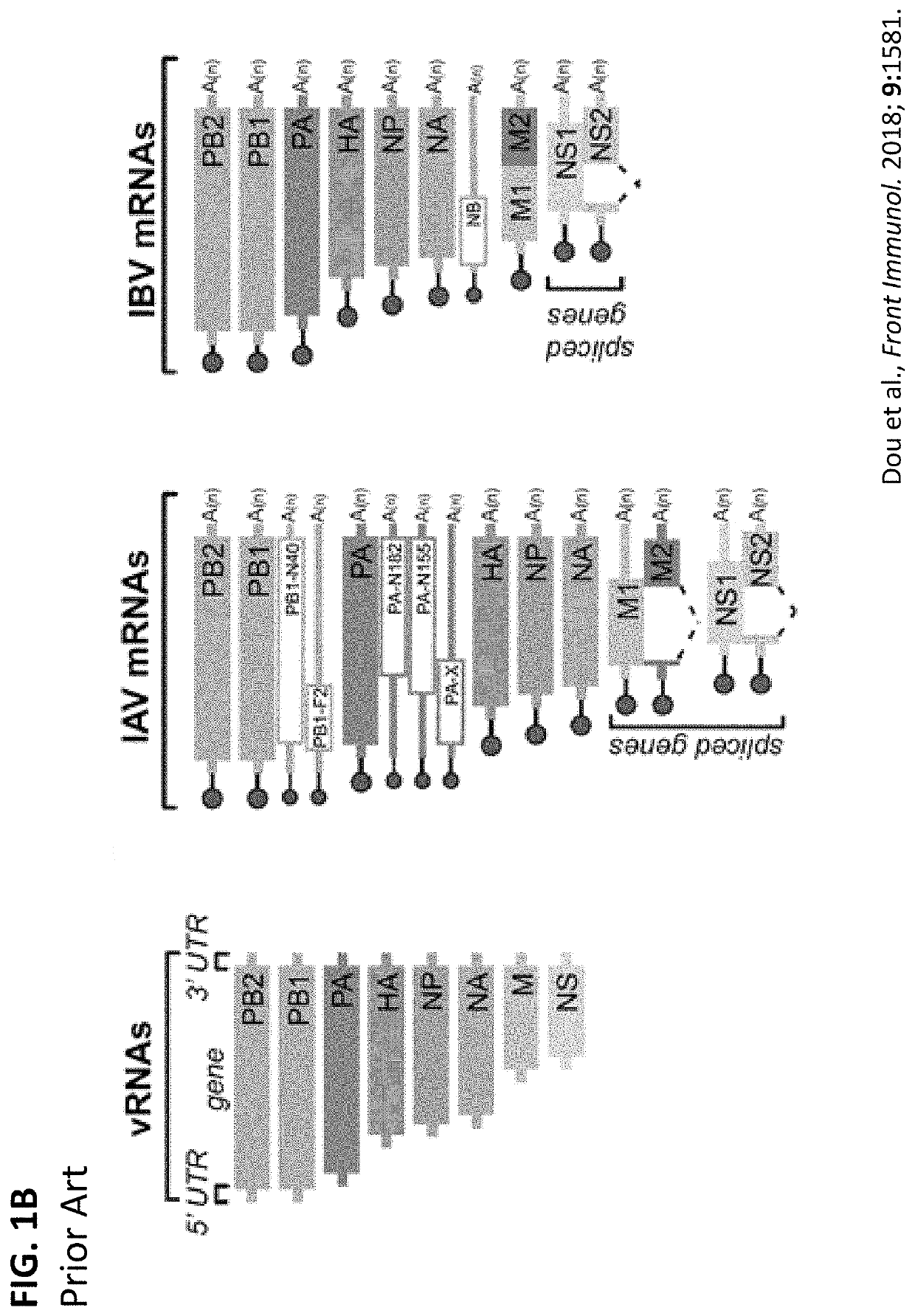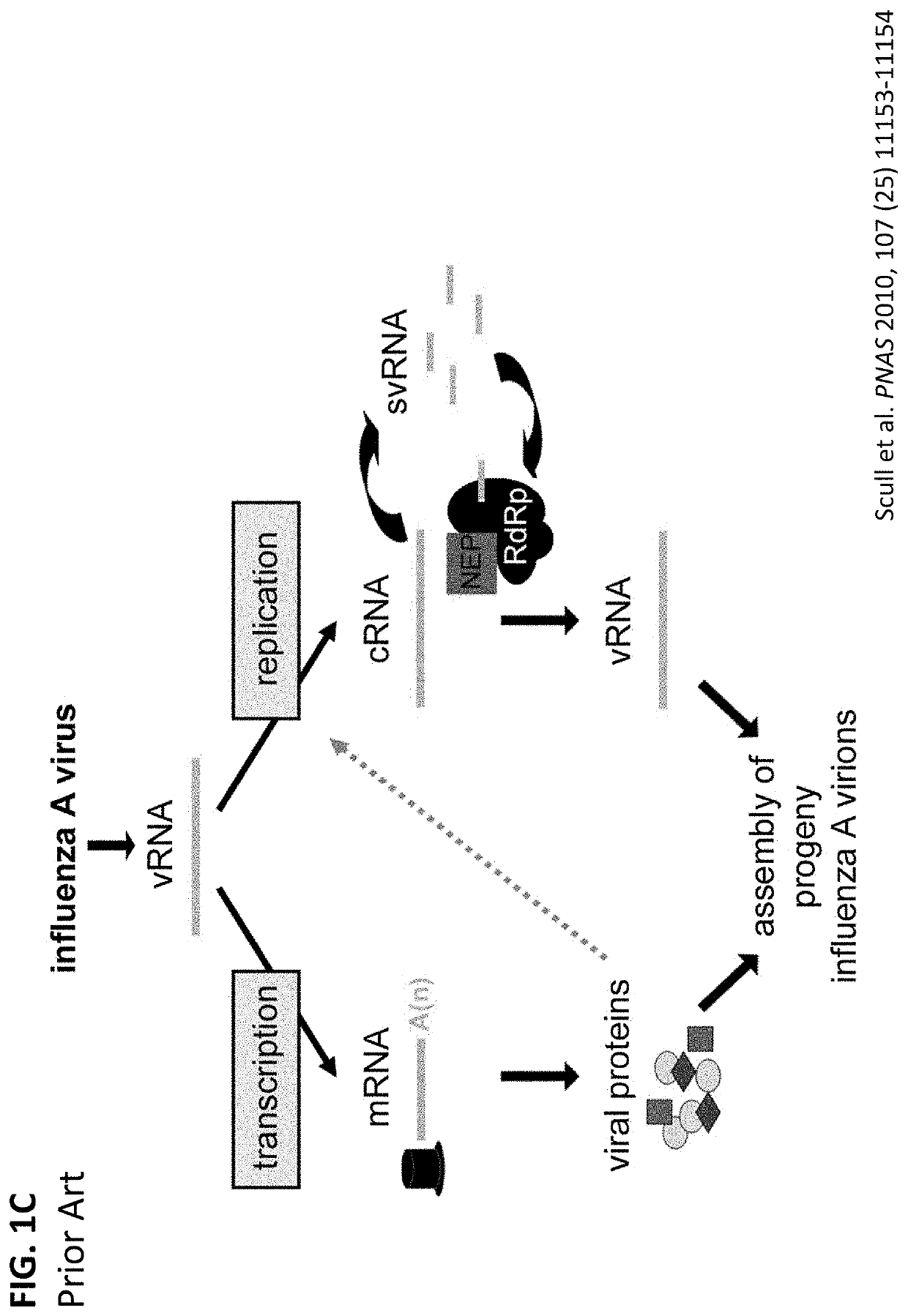Systems, methods, and cell lines for generating influenza virus or influenza virus proteins
a technology of cell lines and viruses, applied in the field of systems, methods, cell lines for generating influenza virus or influenza virus proteins, can solve the problems of logistically challenging acquisition of so many pathogen-free embryonated eggs, time-consuming and inefficient current flu vaccine production, and even greater limitations in egg-based production, so as to reduce or eliminate errors and rapid cell line creation
- Summary
- Abstract
- Description
- Claims
- Application Information
AI Technical Summary
Benefits of technology
Problems solved by technology
Method used
Image
Examples
example 1
ion of Integrated Inducible RdRp Cells (iRdRp Cells)
[0327]This Example describes construction of inducible RdRp (iRdRP) cells, wherein RdRP is integrated into a mammalian cell genome.
Packaging of Lentivirus
[0328]Plasmids contain puromycin resistance gene (puromycin N-acetyltransferase) or blasticidin S resistance gene (bsr) and each of the RdRP genes (PB2, PB1, PA) were each packaged an into lentiviral vectors including: pLenti-TetON-PB2, pLenti-TetON-PB1, pLenti-TetON-PA (see FIG. 2A). In this example, all viral genes are from IAV strain A / Puerto Rico / 8 / 1934. The sequences of pLenti-TetON-PB2, pLenti-TetON-PB1, pLenti-TetON-PA are shown in Table 1. The packaging of Lentiviruses was performed according to the protocols described by Invitrogen using Lipofectamine 3000 Transfection Reagent (L3000015). Briefly, 293T cells were co-transfected with a mixture of plasmids including (1) the packaging vector psPAX (Addgene ID 12260) (2) the envelope vector pMD2.G (Addgene ID 12259), and (3) ...
example 2
n of Infectious Single-Cycle HA-GFP Flu Virus from the iRdRP Cells
[0335]This Example describes using iRdRP cells to produce a single-cycle infectious influenza virus particle.
[0336]iRdRP was co-transfected with of a combination of plasmids: six plasmids (labeled 1-3 and 5-7 in FIG. 3A) each encoding for vRNA of one of PA, PB1, PB2, NA, M, NS; a minigenome including a modified vRNA of HA in which the HA protein coding sequence was replaced with GFP (HA-GFP-HA) (labeled 8 in FIG. 3A); pCAGGS-HA (labeled 9 in FIG. 3A) and pDZ-NP (labeled 4 in FIG. 3A). In this example, all viral genes were from IAV strain A / Puerto Rico / 8 / 1934.
[0337]Each of six vRNA genes (PA, PB1, PB2, NA, M, and NS) were separately cloned in a pPol I vector in which the gene transcription is driven by a human Pol I promoter and murine Pol I terminator. (See FIG. 3A, plasmid 1-3 and 5-7.) A minigenome including a modified HA construct—in which the coding sequence of the HA gene was replaced by GFP—was also cloned into ...
example 3
n of Infectious Replication-Competent Flu Virus from the iRdRP Cells
[0343]This Example describes using iRdRP cells to produce replication-competent infectious influenza virus particle virus.
[0344]The production of fully replication-competent flu virus in iRdRP cells was conducted as previously described (Fodor et al. J Virol 73, 9679-9682 (1999), Martinez-Sobrido et al. J Vis Exp 42, 2057 (2010)). iRdRP cells were transfected with seven pPolI plasmids encoding for seven vRNAs (PA, PB1, PB2, NA, M, NS, and HA) and the pDZ-NP plasmid (as described in Example 2). In this example, pDZ-NP plasmid encodes for NP gene either from IAV strain A / Puerto Rico / 8 / 1934 (denoted as NP-PR8), or strain A / WSN / 1933 (denoted as NP-WSN). All the other plasmids in this Example encode for viral genes from IAV strain A / Puerto Rico / 8 / 1934. 24 hours post-transfection, the transfected cells were overlaid with MDCK to amplify the number of virus particles produced in the transfection. 48-52 hours post-overlayin...
PUM
| Property | Measurement | Unit |
|---|---|---|
| concentration | aaaaa | aaaaa |
| size | aaaaa | aaaaa |
| time | aaaaa | aaaaa |
Abstract
Description
Claims
Application Information
 Login to View More
Login to View More - R&D
- Intellectual Property
- Life Sciences
- Materials
- Tech Scout
- Unparalleled Data Quality
- Higher Quality Content
- 60% Fewer Hallucinations
Browse by: Latest US Patents, China's latest patents, Technical Efficacy Thesaurus, Application Domain, Technology Topic, Popular Technical Reports.
© 2025 PatSnap. All rights reserved.Legal|Privacy policy|Modern Slavery Act Transparency Statement|Sitemap|About US| Contact US: help@patsnap.com



